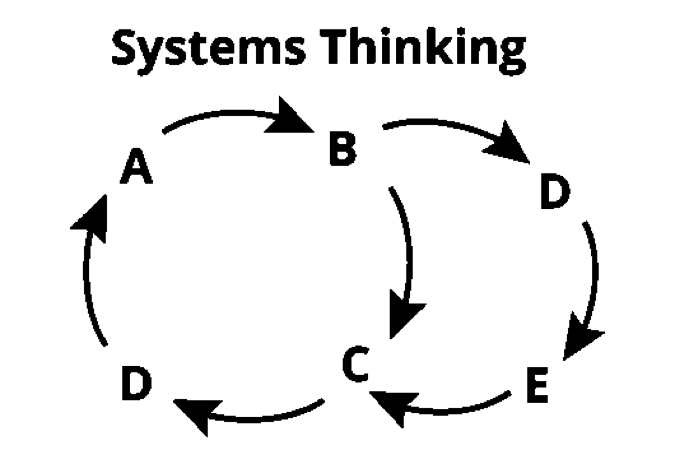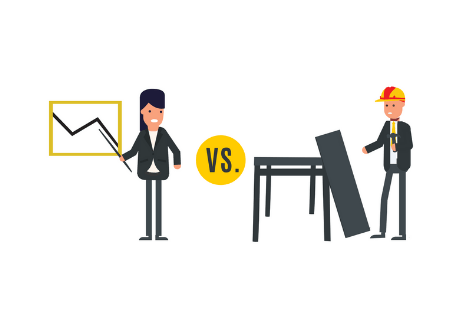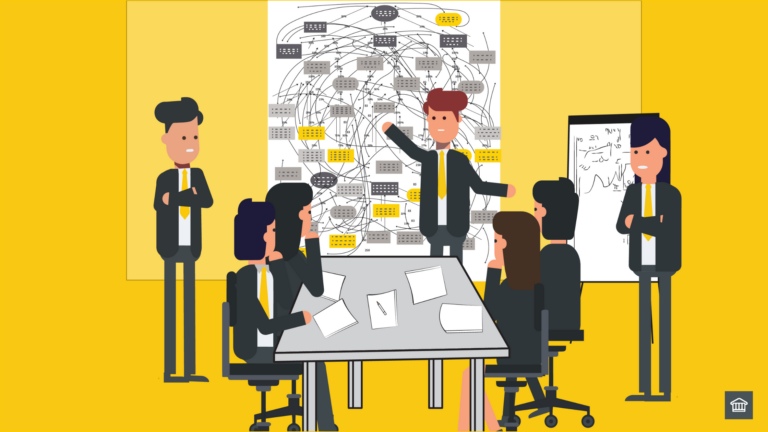As you will learn in our upcoming presentation “FASTAGILE Transformation”, any consultant can deliver real value to their clients with less effort, stress, less cost and time (and increased profits). But first, it will take a mind-shift to do it.
If you are a Consultant and in the business of helping your clients transform their organisation and want to do it faster, with less effort then this post is for you.
First lets be clear, lets get on the same page when it comes to terms. For the context of this article, a Consultant is someone that is paid to provide expert advice to support their client through their transformation, and an Entrepreneur is the one that wants to transform a market or industry, and how they do that is by creating or starting a business, often from scratch.
While both of these people are in Business, they have different drivers, and therefore motivations, which drives the most important thing that we will get into in this post. Actions.
The Problem
When it comes to transformations – Consultants have a bad name, whether it is ‘digital transformations’ (as it is incorrectly referred to in the market place today, I wrote about that in about post here), or ‘business transformations’ – where the Organisation fundamentally changes its business operating model, and uses technology (and in todays’ digital era, uses ‘digital technologies’ to do it).
Consultants have a bad name, mostly because they underdeliver, cost a fortune and never leave. Well, the Top Tier at least, which is why Clients call in smaller niche or boutique consultancies and Independent consultants to come and clean up their projects and programs and get them delivering.
That’s also why Clients call these SMEs in from the beginning – although Clients love their marketing and prestigious brand name to say you got one of the Top Tiers to come in, but they have learnt all too well and paid the cost too high and for too long are now willing to forgo the notoriety of an expensive underdelivered transformation.
Remember transformations have a notoriously low success rate, 70% of transformations end in failure). Clients didn’t have the money to do the transformation in the first place, let alone have the time nor money to do it again TWICE, when they fail the first time.
The first problem is Consultants are accused of creating realms and realms of colorful presentations, that although are very interesting and often very beautiful, they are useless. They don’t make the Organisations transformation go any faster, or smoother, if anything – they make it (more) frustrating and take longer.
It’s not their fault, to be fair (well for the Junior Consultants anyway). That’s the way they were trained. To apply exactly what was said straight out of the text book.
This attitude is like an apprentice who has learnt the fundamentals in University or technical college, and now for the first time on the job is applying that knowledge, but as a “novice” they apply their newly found knowledge straight from the book, literally.
They don’t apply situational awareness or any adaptation to the situation, project or task at hand. They don’t yet have the knowledge or experience to judge the degree of how much, or how little they should apply their chosen methods and frameworks, or whether it was indeed suitable to the situation at all. It’s All (in most cases), and barely nothing.

As their career and experience increases, so does their competency, and their ability to fully deploy a range of skills, tools and techniques and use their training and frameworks proportionately to the situation. When this happens, this is when they reached what we call the Master Transformator. I wrote about the four levels of the Business Transformator here.
The next major problem is a symptom of the first. Now the Consultant is fixated on the framework they’ve been taught, they have now included all the acronyms, terms and jargon from that training into those presentations they now are asking the Client to agree too.
These pretty (and useless) presentations makes it frustrating to the Client because the Stakeholders who the Consultants are there to deliver the transformation for, quickly realise the Consultants have basically created their presentations not for them (the Business), but to impress themselves (the Consultants).
So how can the Consultant stop that behaviour and most importantly, change that stereotype?
The Answer
The answer to breaking the stereotype, is simple. As a Consultant, you need to think, act and behave like an Entrepreneur. You have to be the Entrepreneur-minded Consultant.
Why act like an Entrepreneur? What’s so special about the Entrepreneur, and what the difference with the Consultant? That’s what we will now discuss.
If you want to add Real Value as a Consultant, here are the Entrepreneur 6 traits you need to embrace:
- Time conscious
- Systems-thinking
- Outcome-focused
- Team Player
- Take Ownership
- Agile Mindset
If you want to break that stereo-type and add real value as a Consultant from day-1, here are the 6-traits you need to embrace to be an Entrepreneur-minded Consultant.
Time Conscious
The first trait is time-conscious. The most important thing to an Entrepreneur (after money) is Time. Why? Because time IS money.
The goal of the Entrepreneur is pretty straight forward. I know it’s not popular to say it, but Money (yes, I said it).. They need to make money, often to initially keep the lights on and keep the ‘business in business’. They also might want to do something noble or humanitarian, but unless they can pay staff salaries and mortgages with goodwill and feel-good-factor, they need Money.
The Entrepreneur doesn’t have the luxury of time, to go through every aspect of your framework or methodology, to the nth-degree, or understand this new language you speak to them.
They just need you to deliver their transformation, so that it will bring in money, and that will buy them time. Time for them, and their staff to work on more income generating activities, not the low or no value-adding/compliance they spend most of their time doing now (after all, that is why called you)!
You have to think about “how or what is the quickest way” to get the outcome the client wants? Not “what is the longest way?”
If your concern is “I need to make this transformation last as long as possible, the problem isn’t your method or framework you are using (it could be if its not truly an agile transformation framework. Have a look here for a proven one).
The problem you have is how you priced the job – you priced it based on hourly-rate or ‘hourly-method’, which means you are trying to make the job last as long as you can, when you should be focused on delivering the outcome of the transformation as quick as you can.
If you’re still using the old model of digital business transformation, and haven’t moved to the ‘value-based’ pricing model, we cover that, plus more in our training program here).
Systems Thinking
The second trait to adopt is as I teach my clients and students, is to think in terms of process. There is a cause-and-effect relationship between actions and results, this is also known as (or understanding the mechanics of) Systems Thinking.
As a Consultant, every action has a reaction. And for the Consultant, their actions (or inactions) are directly attributable to the success or failure of the transformation.

With each recommendation there is a decision, and with each decision is a consequence – a positive (intentional) and negative (unintentional).
You need to work through each of these scenarios, and get out of the theory and ‘what if’s and get practical. “What does a day in the life of the HR Advisor look like, if we go that option?” for example, or “What does the day in the life of the HR Advisor look like, if we go that other option?”
You need to work those though to satisfactory, realistic outcomes, not hypothetical ‘this could happen, or that could happen’. That ‘wishful thinking’ isn’t helpful for anybody, least the Client.
You need to be practical, which leads to the next trait.
Outcome-focused
You need to be Outcome-focused. The Entrepreneur views all work, activities and tasks from the perspective of “what’s the point?” “Why are we doing this?” “Why am I being asked to do this?”
This is the attitude you need to take to all work, activities and tasks you yourself undertake, but especially what you are asking your Client to undertake.
As a Consultant on the job or site with the Client, this means two things:
- You have to ask the “hard” questions, and
- You have to ask the “silly” questions.
You have to be pragmatic about what you are asking of yourself, and of the Client, and how it leads to the desired output (i.e. deliver the transformation in the quickest way possible)?
You need to apply wear different hats (see my article I wrote about the Four Hats the Business Transformator needs to wear here).
Team Player
The next trait is, you need to be a team player. There is no “I” in team, and there is not a single individual I have seen who has successfully delivered a transformation of any size, on their own.
You need a team, but not just any team – you need two teams, actually.
First, you need your Core-Team – these are the guys that are from the project that are in the trenches with you. Depending on the size of your Transformation – you will have a Project Manager, a Change Manager, Business Architect (we call Business Transformator, because they have move beyond just Business Design, and include part-strategist, part-designer, part-negotiator and part-collaborator), Business Analyst and Technology Architect. These guys are going to help you design and implement the Clients Target Operating Model (TOM).
Then you need to Client-Team, these are the Key Stakeholders from the Clients Business who are on your RACI Matrix. These are the ones that have the right span of control, and authority (or delegated authority) to provide and agree their concerns and needs, which are going to be addressed in the TOM you design and ultimately implement that transforms the Organisation.
What you are not going to do, is you are not going to have 1 or 2 meetings with the Client, disappear for weeks on end and reappear with colourful presentations full of jargon and tell them “this is your (their) TOM”. We’re trying to break that stereo-type remember!
You need them to work with your team(s), develop and deliver the outcomes of the transformation, together, as a team.
Take Ownership
The next trait is about responsibility. There is no escaping responsibility for an Entrepreneur. Success or failure rests on their head and shoulders. If the Business goes well, it’s their success. If the Business doesn’t go well, it’s their failure. There is no escaping responsibility for them. They can’t palm off the responsibility to others, its theirs, they own it.
What that means for you the Consultant is, you have to own the process, own the outcome, own everything. In practice it means you own the recommendation, own the decision, and most of all you are be responsible for the outcome.
You have to adopt the attitude of ‘if this is my business, what do I need to do now? If this the right action? Is this the right decision? Would this lead to the right outcome?
This should help (or stop) you doing unnecessary work, work for works sake, or as it’s called in digital and business transformation consulting circles ‘boiling the ocean’ (creating reams and reams of colourful, but useless presentations).
Agile Mindset
The last (by no means the least) trait is the mindset. You need to adopt the Agile Mindset.
This is really two parts:
- Understanding the opposite paradigm – perfection. Perfection doesn’t exist (so don’t aim for that), and
- Test, test, test and test some more (i.e. always be testing).
Entrepreneurs know this when they launch a product, they are looking for market-product fit. They don’t know that the product they have in mind is the right fit for the market, so they test it with their target audience, mostly by a pilot, MVP, demo or prototype. A first (cheaper) and scaled down version than the envisioned final product, get it in front of their customer, get feedback and iterate.
Their goal is to get it out the door as quick as they can, to get feedback so they can iterate. As the Consultant, in terms of developing the Clients TOM and helping them with their business transformation – that’s what you have to do – draft your ideas, concepts, building blocks and blueprints and get the first version out the door in front of the Client for feedback, then iterate, iterate, iterate.
You are not going to make it perfect first time round, and even at the final version, its probably not going to be perfect anyway. The longer you work on it, what you are actually doing is adding less and less value to it, its diminishing returns. You need to get it out in front of your Client for review and feedback as quick as you can, and not trying to create ‘perfection’ – because perfection doesn’t exist (it’s an illusion), you will just end up wasting time and money, and missing opportunities, including Yours.
So, there you have it. That’s your Entrepreneur 6-traits you need to embrace to add real value as a Consultant!
If you agree (or not), let us know what you think about in the comments below and what you like to see next.
If you are ready to take advantage of these traits, and most importantly apply the agile mindset to lead your client through their digital business transformation with less effort, less cost, less time and higher profits, then apply to join our 6-week Agile Transformation Accelerator program here.
Thank you for reading this!
Sincerely,
Heath Gascoigne
P.S. If you want to join our Business Transformator community of like-minded Business Transformators, join the FREE community on the Business Transformator Facebook Group here.
P.P.S. If you want to learn more about business transformation, check out The Business Transformation Playbook here.
For more information, visit https://www.hoba.tech












